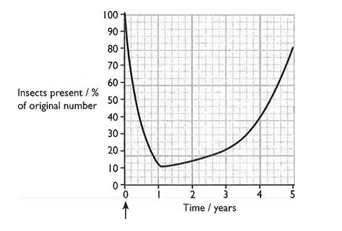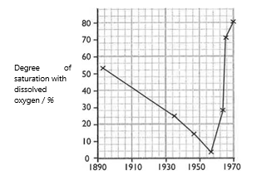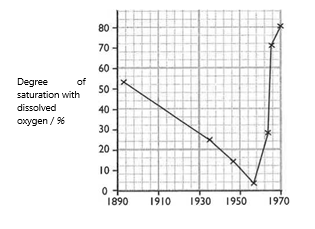Mary Jones and Geoff Jones Solutions for Chapter: Humans and the Environment, Exercise 5: End-of-chapter questions
Mary Jones Biology Solutions for Exercise - Mary Jones and Geoff Jones Solutions for Chapter: Humans and the Environment, Exercise 5: End-of-chapter questions
Attempt the practice questions on Chapter 22: Humans and the Environment, Exercise 5: End-of-chapter questions with hints and solutions to strengthen your understanding. Cambridge IGCSE® Biology Coursebook Third Edition solutions are prepared by Experienced Embibe Experts.
Questions from Mary Jones and Geoff Jones Solutions for Chapter: Humans and the Environment, Exercise 5: End-of-chapter questions with Hints & Solutions
The graph below shows the effect of the number of insects on the crops when an insecticide is used in each of the five years.

Explain why the percentage of insects began to rise in the second year until almost reaching its original level.
Suggest three methods of improving the yield from the crops without the use of an insecticide.
Give two ways in which water obtains dissolved oxygen.
Explain how pollution by sewage causes dissolved oxygen levels to decrease in the following graph.

Suggest why dissolved oxygen levels in the river: decreased until

Suggest why dissolved oxygen levels in the river: have increased since the s.

What effect would you expect a decrease in dissolved oxygen to have on the fish population in the river?
Apart from affecting the levels of dissolved oxygen, what other harmful effects can the discharge of untreated sewage into rivers have?
